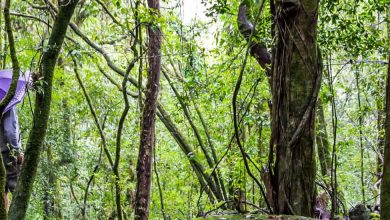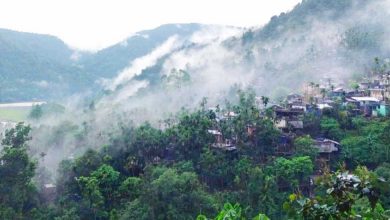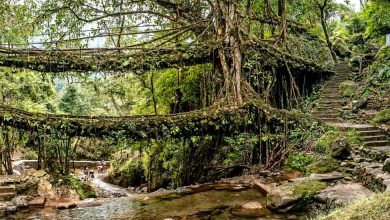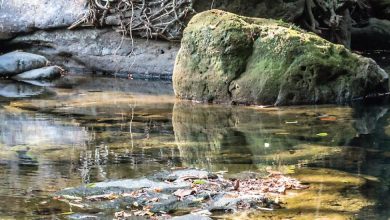The living root bridges of Meghalaya are the most spectacular natural creations that defy the norms of conventional engineering. They are so strong, and resilient and have been around for so long that even time honours their presence on Earth. These are the living examples of the perfect harmony between nature and human beings. How you ask?! While nature set out on its course and created these wonders, humans were happy to nourish, nurture and take care of them for several years. The people of the country consider these marvels to be the most priced possessions and these living root bridges are now on the tentative list of UNESCO World Heritage Sites!
If you are fascinated with the living root bridges, then you should definitely plan a trip to Meghalaya and get a glimpse of Earth’s intricate design.
Read on to find out more about the Living Root Bridges in Meghalaya
Also Read: MY MEGHALAYA TRIP: SOLO TRIPPING AMIDST MOUNTAINS AND CLOUDS
What is a Living Root Bridge?
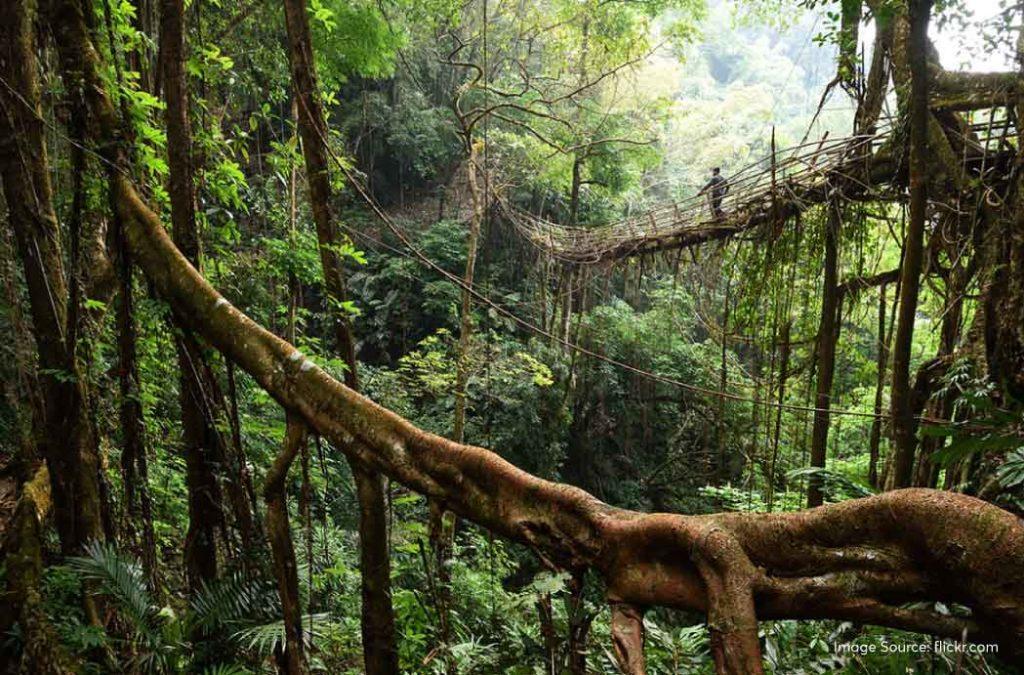
Living root bridges are natural structures that are formed when the roots of the Ficus elastica plant intertwine to form a thick structure that can withstand the weight of humans and animals. However, this doesn’t happen overnight and might take at least a decade to completely take shape. Though the primary roots do not take much time to come out, it is the secondary aerial roots that are essential for the formation of the living root bridges. These must then be guided to intertwine in a certain manner to form sturdy structures. This is done by weaving a bamboo scaffolding that will act as support for the young roots and later humans push them aside along with the roots to give the bridge a shape. The roots then grow and gradually intertwine with the roots of the other tree on the opposite side. This will take at least 30 years to happen but once done, the living root bridges can last for centuries.
Where are Living Root Bridges located?
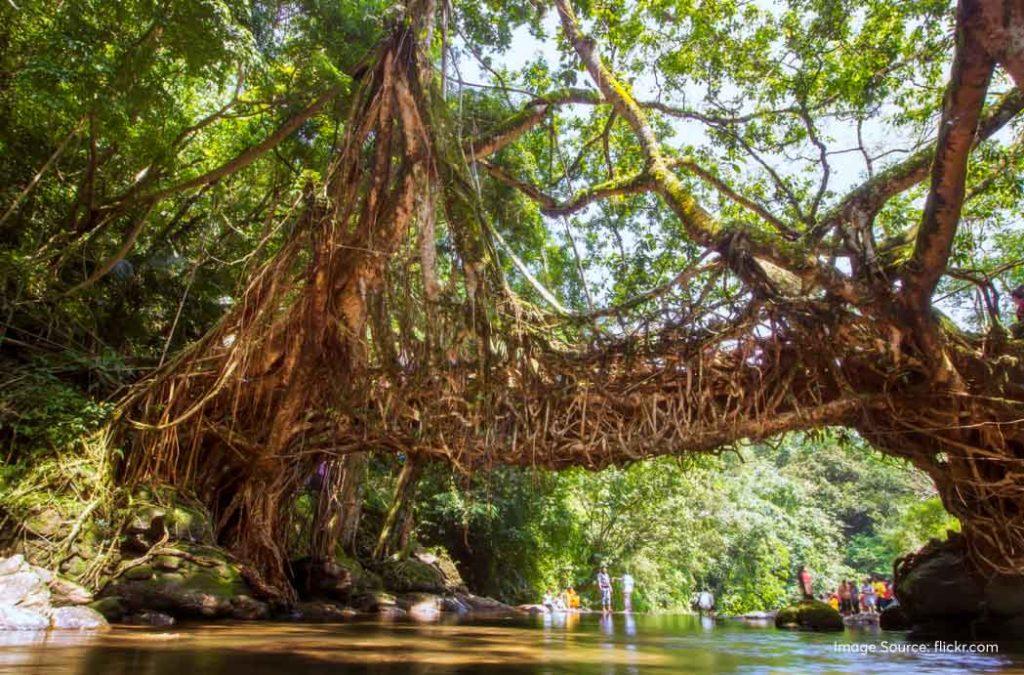
Most of the living root bridges are found in the Meghalaya region. These are at least a century old and the oldest living root bridge in Meghalaya is aged 175 years! You will find most of these living root wonders in the Khasi and Jaintia hill regions. Cherrapunji, which is also called Sohra, is famous for its thick and sturdy living root bridges made from rubber trees.
History of Living Root Bridges
In the olden days, it was hard to go from the bank of one river to another. People used to swim through the stream or take extremely long walking routes to get to the other side. In some cases, there was no other way but to swim and get to where you want to be. However, monsoons increase the flowing speed of the water and people even lose lives trying to cross rivers. That is why the indigenous tribal people of the Khasi and Jaintia regions thought of the living root bridges!
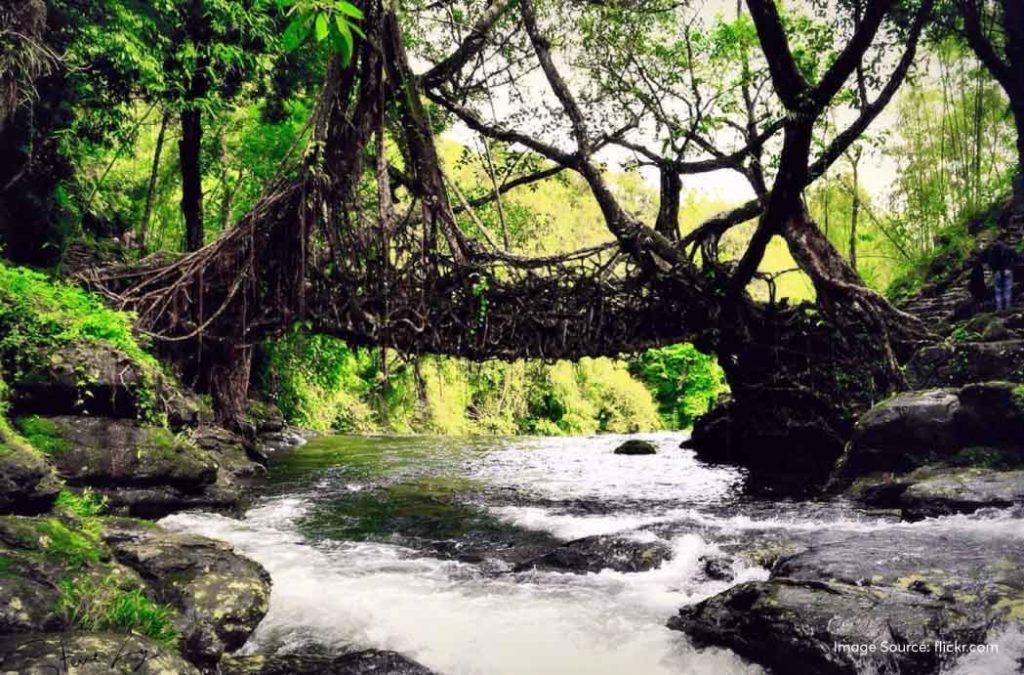
Since then, these bridges have been aiding human beings in crossing rivers, and streams and in creating shortcuts to neighbouring villages. The living root bridges are the perfect example of nature’s grandeur meeting the intellectual smartness of man. Our ancestors have used natural resources smartly to create a sustainable transportation option that is proving to be very advantageous to the people currently living in the villages of Meghalaya.
Significance of a Living Root Bridge
The livelihood of the local villagers and town dwellers will become challenging without the living root bridges. Imagine trying to hold your things or goods in one hand and swimming desperately in the rapid currents of rivers during the monsoon months. This kind of strenuous activity is sure to inflict some pain, wounds, or even tire them for a long time. A living root bridge acts as a connecting point between one region to another, most frequently found across rivers, water streams, waterfalls or aerially in dense forests. People use them to get to their farms, reach the town or even to fetch some necessities from the thick jungles.
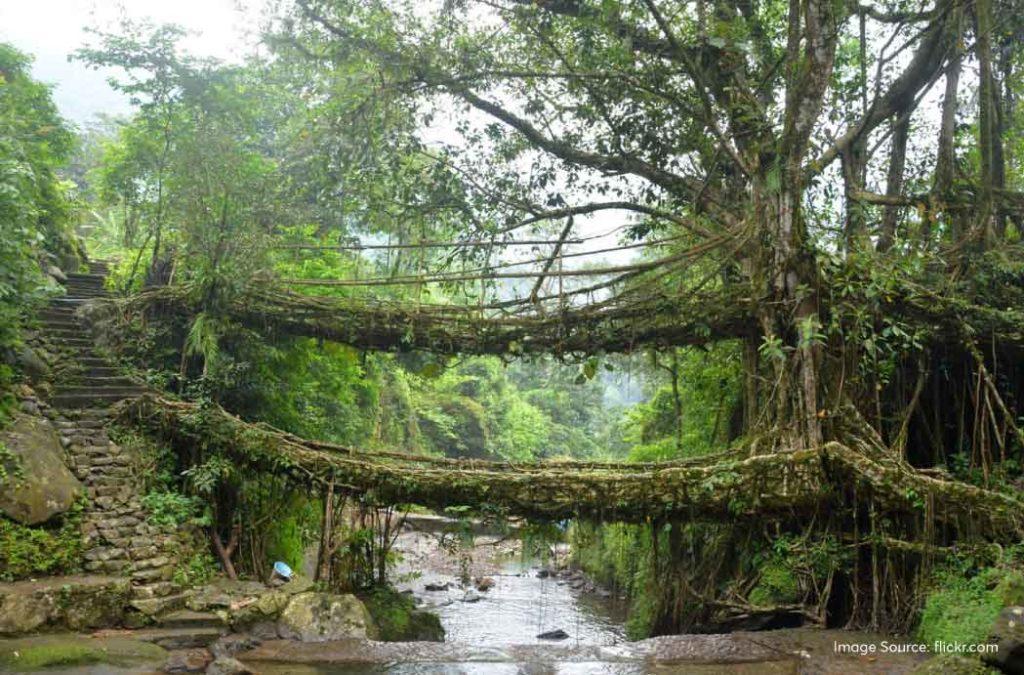
These living root bridges are also symbols of unity among the tribal people. Not just one, but several generations have to come together to build and maintain these bridges. Different communities work hand in hand to make these marvels a reality. This creates a sense of belongingness among the people and despite being in a village, the locals are able to stay financially independent and are embracing opportunities that come knocking on their gates.
From the ecosystem point of view, the living root bridges are known to encourage the existence of biodiversity. They act as bird nesting places, squirrels dwell around searching for nuts, mosses cover the surface of the thick veins and you will find several pollinating insects flying around the bridges. It is also not uncommon to see animals like bark deer, clouded leopards, and sloth bears using these bridges to cross rivers without any worries!
It is so touching to see the people of the Khasi and Jaintia tribes thinking not just about themselves but also about the animals that live on their lands!
Now, let us know about the two most famous living root bridges in the Meghalaya region.
Double Decker Living Root Bridge – Cherrapunji
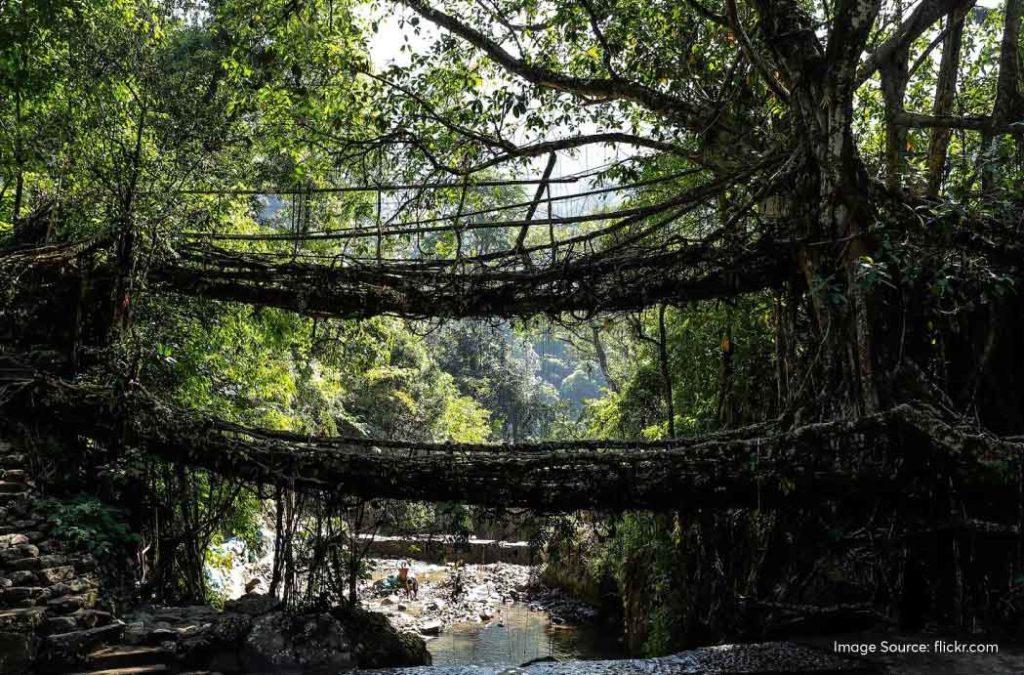
Trekking enthusiasts will definitely enjoy their trip to the double-decker living root bridge. Tourists have to trek for about 45km starting from Cherrapunji to reach the bridge. Though this is not a difficult path, we won’t get ahead of ourselves and call it ‘easy’. Visitors need to take 6500 steps and will also encounter an enthralling waterfall on their way.
This living root bridge can easily hold the weight of 50 people at once and has a lifespan of at least 500 years! However, with booming tourism and people visiting from across the world, the health of the bridge is affected adversely. The Government of Meghalaya is taking measures to reduce the load and restore the vigour of the trees without disturbing the economic statistics of the tourism sector.
Location: 7M2C+GQ5, Nongriat, Meghalaya 793111
Timings: 5:00 AM to 5:00 PM
Entry Fee: INR 30 for adults, INR 15 for children with an additional INR 100 for professional cameras.
Optional Charges: If you take trekking packages with a tourist guide, this can cost you between INR 700 to INR 1500.
Single Decker Living Root Bridge – Shillong
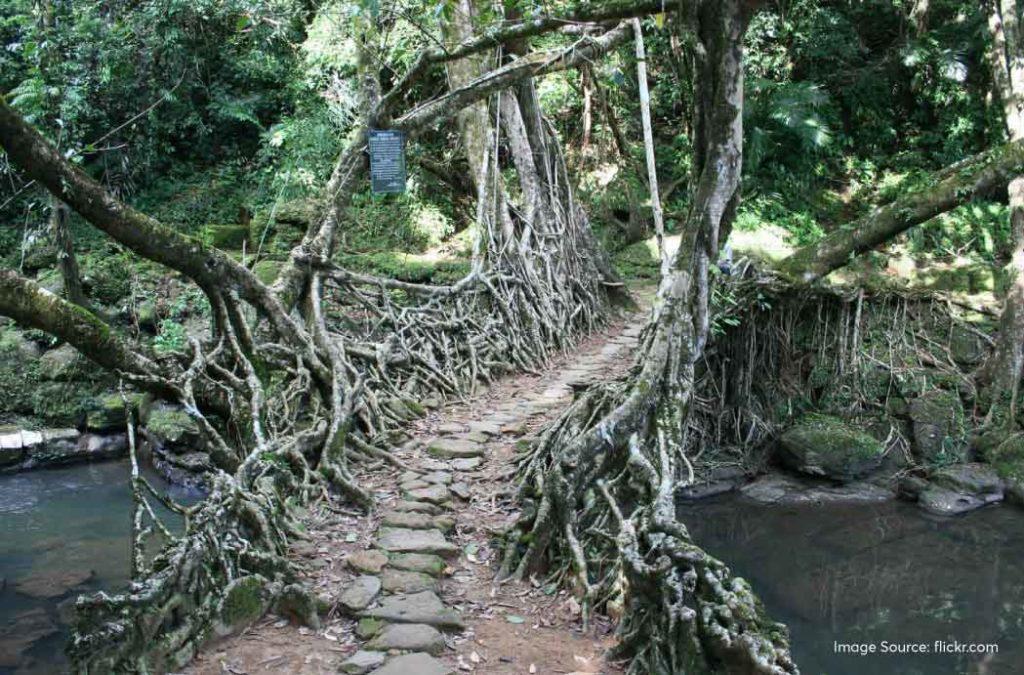
The single-decker living root bridge is an aerial root bridge suspended at an impressive height and offers spectacular views of the surrounding dense bushes, and streams of water. This is a very serene and calm place and will impress anyone who wants to bask in the glory of nature. The thick veins of the roots intertwine impressively and provide strength enough to handle human weight. There are several single-decker living root bridges in Meghalaya. However, we will discuss the one which is closer to the Mawlynnong near the Bangladesh border.
You will have to start your trek from Riwai village and walk ahead for about 30 minutes. The trek is not as arduous as the double-decker root bridge one but still makes you sweat a little. After you reach the bridge, enjoy the quiet atmosphere and also click pictures with the balancing rock!
Location: Mawlynnong Road, Riwai, Nongthymmai, Meghalaya 793109
Timings: 7:30 AM to 5:00 PM
Entry Fee: INR 40
Other 5 Living Root Bridges in Meghalaya
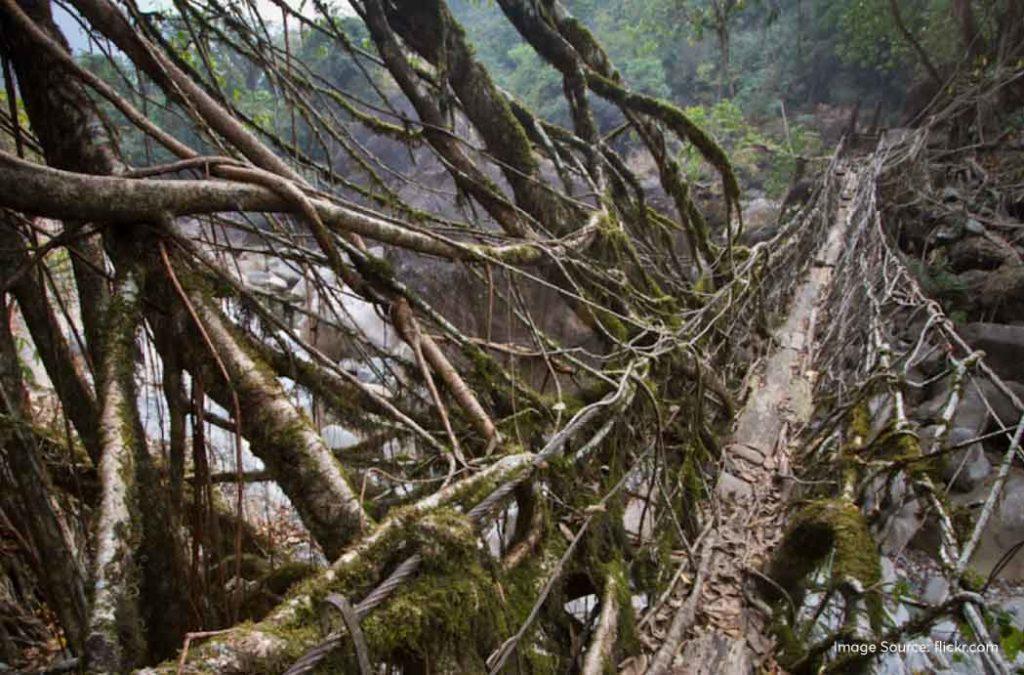
1 – Nonbaregh
The Nonbaregh Living Root Bridge is present in the centre of the town and is a part of the East Jaintia Hills. This mesmerising bridge is the connecting point between two river banks and also bisects the road going to River Umngot. The captivating bridge is almost 100 years old and has been acting as a main route for anyone who wants to go from one river bank to the other. The double-span structure of the root bridge makes it fairly easy to walk and cross it without worrying about tripping or balancing. You will also find food stalls near the bridge so grab yourself a packet of chips and enjoy strolling around.
Timings: 8:00 AM to 6:00 PM
2 – Sohra
Well, some would say since Sohra is one of the rainiest places in the country, the strength and power of the living root bridges are also more than the other places. This is a relative judgement and no one really set out to test the theory. Sohra has the double-decker living root bridge that we discussed earlier. But, you will also find other living root bridges in the region and they are equally spectacular. These bridges are at least 30 to 50 metres long and the lush greenery and canopy of trees that surround the bridges add the much-needed touch of serenity to the places. If you are a cave explorer, you should also check out the marvellous caves near the Sohra village.
Timings: 8:00 AM to 5:00 PM
3 – Padu
If you don’t want to encounter a crowd and want to have a living root bridge all for yourself, then we suggest that you visit the Padu Bridge. This is located about 10km away from Amlarem and not many tourists know about its existence. The aerial roots are suspended from a support and you also have a concrete column to the right side that helps the bridge to stay intact. The roots are thick and strong, capable of handling human load in turns.
Timings: 8:00 AM to 6:00 PM
4 – Kudeng Rim and Kudeng Thymmai
If you are someone who enjoys seeing picturesque scenery or like to hear the sound of cascading water, you must visit the Kudeng Rim and Kudeng Thymmai living root bridges in Meghalaya. These awe-inspiring natural wonders are present at a good height above the rivers they formed upon. Once you get to the top and on these bridges, you can get a good view of the surrounding dense forest and a glimpse of the Krangsuri waterfall with pristine blue water. These bridges are located within the East Jaintia Hills and the Nonbaregh village is much closer to their spot. So, it will be ideal to explore these bridges and Nonbaregh living root bridges on the same day.
Timings: 8:00 AM to 6:00 PM
You May Also Like to Read: MYSTICAL CASCADES: EXPLORE THE 12 SURREAL WATERFALLS IN CHERRAPUNJI
5 – Dawki
The Dawki living root bridge is present in Shnongpdeng and it seems so ethereal that it is hard to believe such a place exists on earth. The entire scenery looks like it is a piece of heaven that stumbled down to our planet. The bridge is magnificent with thick roots and a few roots have also intertwined above the main bridge, acting like a roof. The stream below the bridge is clear and tranquil. You will also see boats going here and about on these waters. The Dawki township and this gorgeous living root bridge are much closer to the Bangladesh border!
Timings: 8:00 AM to 5:00 PM
How to Reach Shillong and Cherrapunji?
To explore the living root bridges, you will have to reach either Shillong or Cherrapunji first and then travel to the individual bridges.
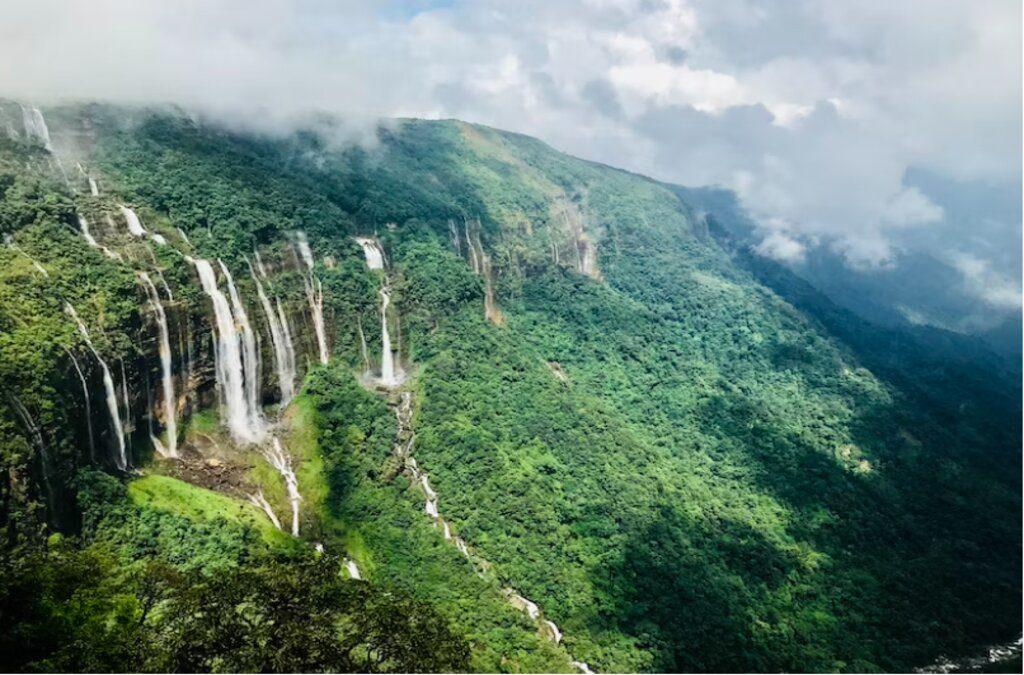
While you are in Shillong, book your accommodation at Hotels in Shillong for a comfortable stay experience.
Now to reach Shillong or Cherrapunji, you will have to reach Guwahati first. Then you can easily find a cab or bus service to reach either of the places.
By Air
Take a flight from any of the Indian cities and reach Guwahati International Airport. From here, Shillong is about 123 km and you have to travel additional 54 km to reach Cherrapunji.
By Rail
You can take a train to reach Guwahati Railway Station which is about 135 km away from Shillong. If you want to go to Cherrapunji directly, take a cab or bus from Guwahati to cover the 148km distance.
By Road
The road trip lovers will enjoy the 99km stretch of road between the Guwahati Main Bus Depot and Shillong. You have to take another bus from Shillong to reach Cherrapunji. The route is scenic with a dense canopy of emerald-colored trees and the smell of exotic flowers.
So, what are you waiting for? Plan your trip to explore the living root bridges of Meghalaya today!
